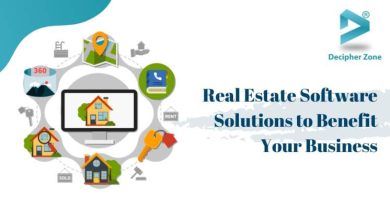What Landlords Need to Know About the Pass-Through Safe Harbor Rule

In 2018, the Tax Cuts and Jobs Act (TCJA) introduced a variety of tax changes for landlords.
In addition to lowering individual income tax rates, the TCJA also outlined a critical tax deduction for landlords: the pass-through deduction. One reason this deduction is so valuable is because the IRS provides safe harbor rules in case you don’t meet the original requirements.
However, if you don’t understand the pass-through deduction or its requirements, you could miss out on its key benefits. The only way to save money on your taxes while avoiding an audit is to research and read about the deduction and the safe harbor rule in turn.
Let’s dive into the pass-through deduction and how you can qualify for it with the safe harbor rule.
What is the Pass-Through Deduction?
The pass-through deduction, also called the qualified business income deduction, is a tax deduction that allows landlords to deduct up to 20% of their net rental income from their income taxes.
This 20% deduction constitutes a large amount of your rental income and is immensely advantageous. You can save a sizable amount on your taxes simply by paying attention to this deduction and knowing how to apply it.
In addition to its large amount, the pass-through deduction isn’t an itemized or “above-the-line” deduction. This means you don’t have to meticulously track your hourly activities or minute details to use it. The pass-through deduction also doesn’t reduce your adjusted gross income like other deductions, such as that of loan interest.
The benefits of the pass-through deduction are overwhelming clear. But how does the pass-through deduction work?
Basic Requirements
The pass-through deduction has a set of basic requirements.
However, if your properties are particularly complex or you have difficulty meeting the requirements, it doesn’t mean you won’t be able to deduct that 20%. Instead, you’ll have to use the safe harbor rules, which will be discussed later.
Here are the basic three qualifications you must meet to apply the pass-through deduction:
- You must have a pass-through business. This means that you, the owner and taxpayer, pay tax on the rental income you earn on your individual tax return. Most small and mid-sized landlords already run a pass-through business and won’t have difficulty meeting this requirement.
- You must have qualified business income. Qualified business income (QBI) is the net profit your rental business generates annually. You can calculate QBI by subtracting your rental deductions from your total income. However, not all sources of revenue count as QBI. For instance, dividend income, interest income, and wages paid to S corporation shareholders are all excluded from QBI. See the tax code for more information about what qualifies as QBI.
- Your rental business must be for-profit. This criterium concerns the IRS classifications for landlord: passive investor, business owner, and not-for-profit owner. To use the pass-through deduction, you must be classified as a business owner. Typically, this means actively managing (or hiring someone to manage) your properties and making a profit.
The Safe Harbor Rule
The above three criteria are the basic requirements for the pass-through deduction. However, issues may occasionally arise for landlords who own different properties.
To allow more landlords to take advantage of this deduction, the IRS established the “safe harbor” rule. This rule states three additional criteria which, if you meet, automatically qualifies you for the pass-through deduction regardless of whether you meet the basic criteria.
The three safe harbor requirements are:
- You must keep separates records for income and expenses. Do this for each rental enterprise you manage.
- You must dedicate at least 250 hours to your rental activities each year. These activities don’t need to be performed by yourself directly (your employee or agent’s work counts toward your 250 hours, too), and include advertising, leasing, tenant screening, collecting rent, purchasing supplies or materials, managing employees and independent contractors, or any other daily operation or task.
- You must keep detailed records showing the services performed.
If you want to use the safe harbor, you must include the following statement, and sign it, with your tax return:
“Under penalties of perjury, I declare that I have examined the statement, and, to the best of my knowledge and belief, the statement contains all the relevant facts relating to the revenue procedure, and such facts are true, correct, and complete.”
Remember, if you don’t meet the safe harbor requirements, you can still use the deduction—you’ll just have to qualify under the regular rules.
Maximizing Your Pass-Through Deduction
If the pass-through deduction still seems confusing, you aren’t the only one. This deduction is fairly complicated. Here are a few tips for maximizing your deduction:
- Ask for help from a tax professional.
- Buy a new property. The amount of your deduction may vary depending on whether you have employees and the amount of W-2 wages you pay them. If you don’t qualify for the deduction you had hoped for, purchasing a new rental property can help you get there.
- Maximize your rental income. Generate the highest profits you can by paying off debts and avoiding cost segregation, bonus depreciation, or Section 179 expensing.
Conclusion
The pass-through deduction is complex, but well worth your time. By researching the qualifications and enlisting help when you need it, you can use the pass-through deduction to save money and maximize your return.



